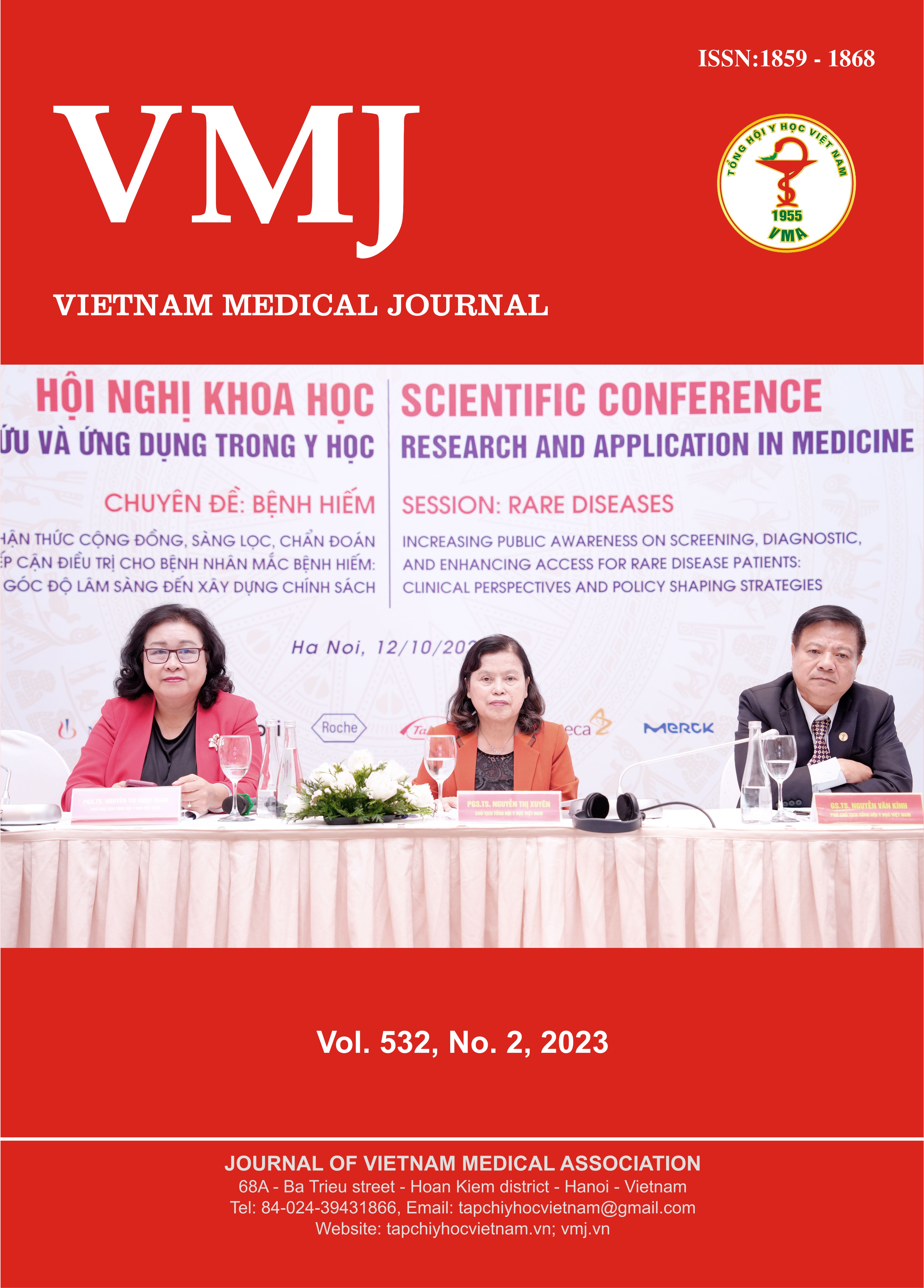RESULTS OF THE ANTIBIOTICS TREATMENT COMBINED WITH LIVER ABSCESS DRAINAGE AT NGUYEN TRI PHUONG HOSPITAL
Main Article Content
Abstract
Background: Percutaneous drainage of liver abscess is the initial treatment of choice for abscesses larger than 5 cm in size and has long been applied in many hospitals in Vietnam. However, there are not many summary reports on both antibiotic treatment and abscess drainage under ultrasound guidance. Subjects and methods: Retrospective study of patients with liver abscess who were treated with antibiotics and drained the abscess under ultrasound guidance at Nguyen Tri Phuong Hospital from January 2017 to March. 12/2022. Results: There were 61 patients included in the study. The first-line antibiotic treatment is Cephalosporin III generation combined with intravenous metronidazole, most are sensitive to third generation Cephalosporins (49.2%), 8.2% are multi-resistant ESBL-secreting bacteria using Carbapenems. The treatment success rate is high (96.7%). The time for the patient to have no fever and no pain in the right lower quadrant is from 1 to 4 days. Most of the interventions were 1 time (90.2%). The average tube retention time was 12 days. Conclusion: Treatment of liver abscess with antibiotics combined with ultrasound-guided drainage is an effective and safe measure. Most of the cases are only intervention 1 time with high success rate.
Article Details
Keywords
liver abscess, antibiotics, ultrasound-guided drainage
References
2. He S, Yu J, Wang H, Chen X, He Z, Chen Y. Percutaneous fine-needle aspiration for pyogenic liver abscess (3-6 cm): a two-center retrospective study. BMC infectious diseases. Jul 16 2020;20(1):516. doi:10.1186/s12879-020-05239-5
3. Yin D, Ji C, Zhang S, et al. Clinical characteristics and management of 1572 patients with pyogenic liver abscess: A 12-year retrospective study. Liver international : official journal of the International Association for the Study of the Liver. Apr 2021;41(4):810-818. doi:10.1111/liv.14760
4. Serraino C, Elia C, Bracco C, et al. Characteristics and management of pyogenic liver abscess: A European experience. 2018;97(19)
5. Malik AA, Bari SU, Rouf KA, Wani KA. Pyogenic liver abscess: Changing patterns in approach. World journal of gastrointestinal surgery. Dec 27 2010;2(12):395-401. doi:10.4240/wjgs.v2.i12.395
6. Singh S, Chaudhary P, Saxena N, Khandelwal S, Poddar DD, Biswal UC. Treatment of liver abscess: prospective randomized comparison of catheter drainage and needle aspiration. Annals of gastroenterology. 2013;26(4):332-339.
7. Bansal A, Bansal AK, Bansal V, Kumar A. Liver abscess: catheter drainage v/s needle aspiration. J International Surgery Journal. 2016;2(1):20-25.
8. Jha AK, Jha P, Chaudhary M, et al. Evaluation of factors associated with complications in amoebic liver abscess in a predominantly toddy‐drinking population: a retrospective study of 198 cases. 2019;3(6):474-479.


